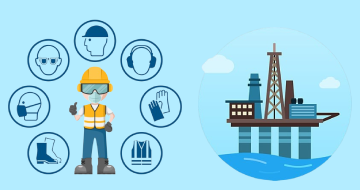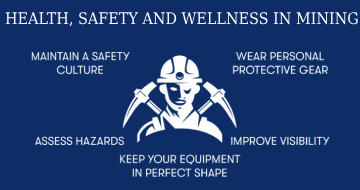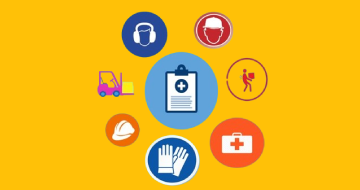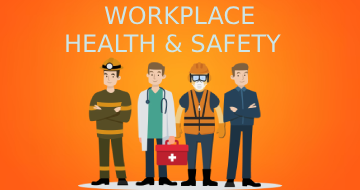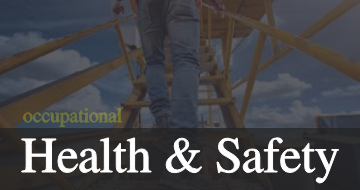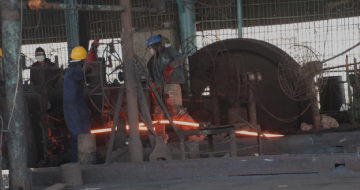IIRF Online > Business > Industry > Workplace Health and Safety > OSHA Workplace Safety (General Industry 6 Hr Class)
OSHA Workplace Safety (General Industry 6 Hr Class) by Udemy
Learn the requirements and standards associated with OSHA and workplace safety. Safety best practices for the workplace.
Course Highlights
- Define terms such as floor opening, standard railing, standard toeboard, floor hole, and wall opening. They will be able to identify safety requirements to help prevent walking and working surface hazards related to general housekeeping floors, walls, open-sided surfaces, stairways, ladders, and scaffolding.
- Gain a thorough understanding of mechanical hazards and the importance of safeguarding machines. They will have learned about different types of guards and devices that will protect them as they work. Employees will understand OSHA standards in regard to machine guarding.
- Identify the four main types of injuries that may result from electrical contact. The student will be able to describe the three types of electrical hazards that may be encountered, and name warning signs that indicate their existence. They will also be able to identify methods of protection from electrical hazards and safety training requirements for working with electrical equipment.
- Find and identify the standards that are place in order to prevent these hazards, as well as the primary concerns associated with design and construction, ventilation, ignition sources, and storage. The student will be able to identify boiling points and will be able to explain the degrees in which explosions can occur and how to prevent them.
- Articulate the importance of ergonomics in the workplace. They will be able to define ergonomics and identify risk factors for musculoskeletal disorders, as well as explain the benefits of using a proactive approach to ergonomics in the workplace. The student will be able to discuss the elements of an effective ergonomic process.
- Distinguish why having an emergency action plan is important. They will be able to identify potential emergencies and what should be included in the plan. The student will be able to describe how to account for personnel, and discuss what kind of medical assistance, security, and training should be made available.
- Locate the minimum requirements for lockout and tagout of energy isolating devices. They will be able to identify employer requirements and responsibilities, device requirements and procedural requirements.
- Identify what respirators are, how respirators function, and what is needed for a respirator to provide protection. They will be able to describe how a respirator works, what filter classifications and cartridges are used for different situations, as well as the care and maintenance for respirators.
- Solve general hazards related to slips, trips, and falls. They will also be able to explain the proper usage of ladders, stairs, ramps, and loading docks, as well as the common hazards and risks associated with each of these, and how to remedy those hazards and risks.
Skills you will learn!
Curriculum
1 Topic
Introduction
1 Topic
Pre-Assessment
14 Topics
Introduction
Description
Purpose
Standards
General Duty Clause
Development and Adoption of Standards
Keeping Employees Informed
Workplace Inspections
Types of Inspections
Citations and Penalties
Roles and Responsibilities
Knowledge Check
Summary
Introduction to OSHA Final Quiz
12 Topics
Introduction
History of Industrial Hygiene
OSHA Requirements and the Industrial Hygienist
Worksite Analysis
Recognizing and Controlling Hazards
Air Contaminants
Chemical Hazards
Biological Hazards
Physical Hazards
Ergonomic Hazards
Summary
Introduction to Industrial Hygiene Final Quiz
9 Topics
Introduction to Safety and Health Programs
Benefits of Safety and Health Programs
Elements Safety and Health Programs
Management Commitment and Employee Involvement
Worksite Analysis
Hazard Prevention and Control
Safety and Health Training
Summary
Safety and Health Programs Final Quiz
13 Topics
Introduction
When to Use PPE
PPE Programs and Training
Knowledge Check
Head Protection
Eye and Face Protection
Hearing Protection
Body Protection
Hand Protection
Foot Protection
Knowledge Check
Summary
Personal Protective Equipment Final Quiz
14 Topics
Introduction
How Do Respirators Work?
Respirator Material
Filter Classification
Cartridges
Oxygen
Chapter 1 Quiz
Cautions and Limitations of Respirators
Training
Assignment of Respirators
Cleaning Maintenance and Storage of Respirators
Respiratory Equipment Considerations
Summary
Respiratory Protection Final Quiz
8 Topics
Introduction
General Requirements
Floor Openings Holes and Wall Openings
Chapter 1 Quiz
Open-Sided Surfaces and Stairways
Ladders and Scaffolding
Summary
Walking and Working Surfaces Final Quiz
14 Topics
Introduction
Chemicals in the Workplace
Hazard Evaluation
Written Hazard Communication Program
Labels and Other Forms of Warning
Chapter 1 Quiz
Material Safety and Data Sheets
Lists of Hazardous Chemicals
Employee Information and Training
Trade secrets
Medical Emergencies
Non-Medical Emergencies
Summary
Hazard Communications Final Quiz
17 Topics
Introduction
Safety and Health Programs
Work Plans
Site Evaluation and Control
Site-Specific Safety and Health Plans
Engineering Controls and Work Practices
Personal Protective Equipment (PPE)
Airborne Contaminants
Drums and Containers
Medical Surveillance
Decontamination Procedures
Temporary Worksites
Emergency Response
Record Keeping
Information and Training Programs
Summary
Hazardous Materials Final Quiz
13 Topics
Introduction
Transmission
Precautions
Safety Tips
Disposal and Labels
Needles and Sharps
Broken Glassware
Post Exposure Evaluation and Follow-Up
Record Keeping and Employer Responsibilities
Hepatitis B Vaccination
Chapter 1 Knowledge Check
Summary
Bloodborne Pathogens Final Quiz
12 Topics
Introduction
Definitions
Classes of Combustible Liquids
Flammable (Explosive) Limits
Chapter 1 Quiz
Design Construction and Capacity of Containers
Design and Construction of Inside Storage Rooms
Storage Inside of the Building
Storage Outside of the Building
Incidental Storage or Use of Flammable or Combustible Liquids
Summary
Section Flammable and Combustible Liquids Final Quiz
13 Topics
Introduction
Identifying Fire Hazards
Arson
Smoking
Appliances
Common Fire Hazards
Fire Emergency Systems
Fire Extinguishers
Fixed Fire Extinguishing Systems
Emergency Action Plans
Fire Prevention Plans
Summary
Fire Safety and Prevention Final Quiz
13 Topics
Introduction
Ergonomics and Musculoskeletal Disorders
A Proactive Approach to Ergonomics
Elements of an Effective Ergonomic Process
Identifying Ergonomic Problems: Reporting
Identifying Ergonomic Problems: Observation and Review
Knowledge Check
Chapter 1 Quiz
Controlling Ergonomic Hazards
Other Key Elements of the Ergonomics Process
Knowledge Check 2
Summary
Ergonomics in the Workplace Final Quiz
13 Topics
Introduction
How Electricity Works
Electrical Injuries
Knowledge Check
Chapter 1 Quiz
Overview of Electrical Hazards
Wiring and Overload Hazards
Grounding Hazards
OSHA Electrical Requirements
Electrical safety Training Requirements
Knowledge Check
Summary
Electrical Safety Final Quiz
13 Topics
Introduction
Why and Where Mechanical Hazard Occur
Safeguarding
Knowledge Check
Machine Safeguarding: Guards
Machine Safeguarding: Devices
Machine Safeguarding: Location/Distance
Machine Safeguarding: Feeding and Ejection Methods
Machine Safeguarding: Miscellaneous Aids and Equipment
Machine Safety Responsibilities and Training Requirements
Knowledge Check
Conclusion
Machine Guarding Final Quiz
10 Topics
Introduction
General Hazards
Identifying Hazards
Reducing the Risk of Slips Trips and Falls
Chapter 1 Quiz
Ladders
Stairs
Ramps and Loading Docks
Summary
Slips Trips and Falls Final Quiz
15 Topics
Introduction
Responsibility for Safety and Safety Equipment
Fall Protection Plan
Guardrail Systems
Personal Fall Arrest System (PFAS)
Safety Net Systems
Walkways and Ramps
Scaffolding and Excavation
Roofs
Wall Openings
Good Work Practices
Training
Duty to Provide Fall Protection
Summary
Fall Protection Final Quiz
17 Topics
Introduction
Lockout/Tagout Requirements and Definitions
Responsibility
Employee Retraining
Coordination with Other Procedures
Lockout/Tagout Device Requirements
Procedural Requirements
Chapter 1 Quiz
Preparation for Lockout or Tagout
Sequence of Lockout or Tagout System Procedures
Restoring Machines or Equipment to Normal Production Operations
Procedures Involving More Than One Person
Group Lockout and Tagout
Periodic Inspection
Outside Personnel
Conclusion
Lockout Tagout Final Quiz
14 Topics
Introduction
The Purpose of the Emergency Action Plan
Identifying Potential Emergencies
Creating Your Emergency Action Plan
Knowledge Check EAP Creation Consideration
Chapter 1 Quiz
Accounting for Personnel
Personal Protection
Medical Assistance
Security
Training and Review
Knowledge Check 2
Conclusion
Emergency Action Plans Final Quiz
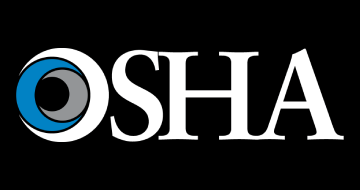
OSHA Workplace Safety (General Industry 6 Hr Class)
